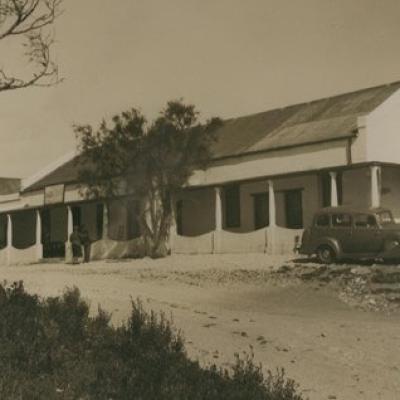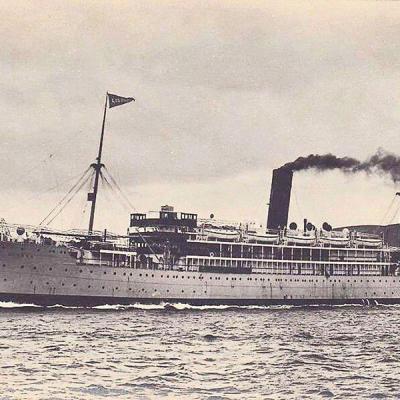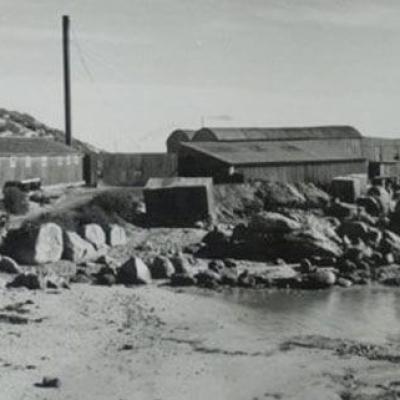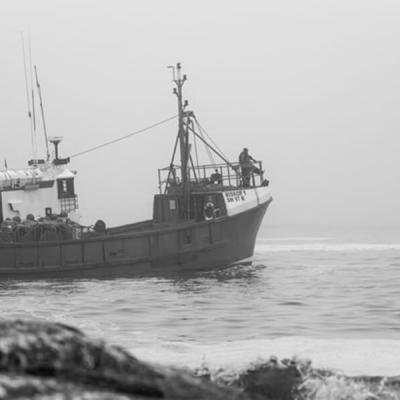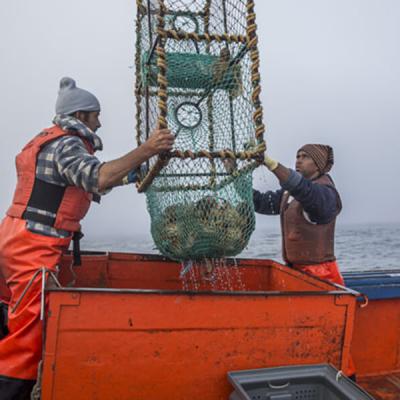History of Paternoster

Economy
Paternoster is a sought after tourist destination and is known for lobster and the white-washed fishermen’s cottages. The remarkable coastline of jagged cliffs and white boulders makes this one of the most beautiful beaches on the West Coast of South Africa.
The area is a pillar in the South African commercial fishing industry. The town itself has a lobster factory and a newly erected Kabeljou farm, whilst the local people catch and sell herring, or draw mussels from the rocks. In the greater area are several more commercial activities, including deep sea fishing, snoek catching, Kabeljou farming, oyster farming, canning of pilchards and mussel farming. The oyster farm in the lagoon of the neighbouring town of Langebaan is currently the largest in South Africa. The West Coast rock lobster Jasus lalandii was enjoyed by the first Portuguese navigators.
By 1902 a full-blown lobster industry was in operation, canning and exporting lobster to France in particular. The West Coast lobster industry generates millions each year and employs large numbers of the local people.
In the 1930s the first Redro factory was erected in Paternoster. Redro fish paste has been developed by the Stephan family in an effort to compete with the already popular Peck’s Anchovette of Britain. It flew off the shelves when first released and enjoyed nearly three decades of uncompromising sole monopoly in the savoury spread market and is now owned by Pioneer Food Group
The Cape Bokkoms has been well known in this region and has been a cheap and practical source of protein for centuries. The unique method of preparing and drying fish has grown with leaps and bounds, often for export, in response to the growing demand for the product from South Africa
Tradition
The community has been dependent upon the ocean for sustenance and sustainability.
This has changed over time as the village and the community has grown and the traditions of fishing have been curtailed. Today, Paternoster is a prime tourist destination, with its unique white-washed fishermen’s cottages, bordering expansive white beaches, all wrapped up with the Atlantic Ocean and Sandveld.
Historically the centre of the Lobster industry, generations of families have followed the sea, however, today the community have learnt new skills in servicing the tourist industry and associated industries.
Paternoster Fishery is the last remaining commercial Lobster fishing enterprise with three working boats, which continues the tradition of supplying the Cape West Coast Rock Lobster to local and international markets (according to the quota system of limited supply governed by stringent legislation).
Engrained in the community and responsible for the livelihood of its workers (whom all have decades of service), Paternoster Fishery, is unique in its social investment into the community.
Hyperlink: www.paternostervissery.co.za/#paternoster
Climate
The climate is mostly known for its infrequent rainfall, dry countryside and high offshore winds. The area receives most of its rainfall during winter and has a Mediterranean climate. The climate supports the growth of the famous wildflowers that the West Coast is renowned for. Winter is a different and interesting time to visit the West Coast for a variety of reasons.
Believe it or not: the best thing about the winter is the fact that the sea temperature is actually warmer. The reason for this is mainly because of the change in wind direction, which shifts from the south-east to a northwesterly direction (very strong at times-in other words: into our faces!). In summer the wind from the south-east blows away the top layer of warm water and is replaced by an icy cold upwelling of water from the ocean floor (you definitely need the summer sun to survive that). Not to mention that the winter swell makes for amazing waves; surfer paradise!
There are two theories as to the origins of the name Paternoster
- Theory number one is a little ho-hum – that the name is derived from a kind of fishing tackle that originated here.
- Theory number two is rather more dramatic…legend has it that many years ago a Portuguese vessel was shipwrecked off that stretch of coast and the survivors said the Lord’s Prayer / Our Father (Paternoster) in thanks for their deliverance from a potential watery grave.
The discovery of pre-colonial burials on the grounds of St. Augustine's Primary School in Paternoster has put the school on the national and possibly the international archaeological map.
So said acting principal Jesse Constable in reaction to the publicity the school received since the burials were discovered in December last year. Three partial human skeletons were found by construction workers digging trenches for two new classrooms.
“I immediately contacted Pipa Haarhoff at the West-Coast Fossil Park. She, in turn, informed the Western Cape Heritage Council.” Construction was halted until archaeological excavation could take place. Constable said when the school reopens in January, learners, scared of ghosts, kept their distance from the cordoned off-site. “I reassured them that it is the bones of our forefathers,” Constable said that despite some concerns about the possibility that there might be more graves on the school grounds and the implications for St. Augustine’s, the whole community is ecstatic about the invaluable discovery and they believe it will help to complete the puzzle of their existence.
Paternoster Hotel
The original building was built in 1863 by the Paternoster community with limestone from the area.
In those days it was the local gathering place with shops and a holding cell. The Dining Room was used for dances and Church services and the Function Hall was an open area used by the local farmers to store their harvest.
In 1940 the Tollman family bought the building and converted it into a Hotel which they sold to the Sanks family in 1948 before they immigrated to England.
The Tollman children returned to South Africa in 1997 and donated money for the building of the Paternoster Community Hall.
Dawie Walters bought the Hotel from the Sanks family in 1957 and had 3 managers until he sold it to Paternoster Fisheries in 1965.
In 1970 Hendrik de Goede bought the Hotel business from Paternoster Fisheries and sold it to Johan Carosini in 1973.
Johan and his wife Wilna with their unique style of hospitality transformed the Paternoster Hotel into a well-known business.
In October 2002 Johan welcomed his eldest son Giorello as co-owner.
Cape Columbine Lighthouse
The reserve covers an area of 263 hectares along the rocky stretch of coastline. The bay, which is part of the reserve, has many picnic spots and braai facilities. Cape Columbine lighthouse is the last manually controlled lighthouse in South Africa. The lighthouse was built in 1936 on Castle Rock. The light casts a beam which is visible from about 50 km and is usually the first South African lighthouse seen by ships coming from Europe.
Open Mon to Fri (excluding public holidays) 10am – 3pm Visitors can pay a visit to the Cape Columbine nature reserve.
Spring Flower Season
What makes flower season so very special on the West Coast is that for approximately 10 months of the year (give or take) we see very little colour. The surrounding veld is various shades of grey/brown/beige and maybe dark green and then for a limited time the riotous colours of wildflowers paint the fields and parks all around us and we are charmed! The fact that the season is so short and so fierce makes it all the more precious.
The good news is that because of the extended rainy season (every week or two we have some good rain) the season should last well into September. Don’t forget to look out for new varietals popping up as the rain daisies and gousblom fade.
Flower Hotline: 072 938 8186
Local plants
For more than 95% of the last 100 000 years, most of the inhabitants all over the world had a hunting and gathering way of life. For the two months (August & September) that follow winter approximately 250,000 hunter/gatherers would make the temporarily abundant dunes of Paternoster below Kasteelberg their home, forage for food and leave behind interesting clues to their nomadic lives. There are many middens (refuse heaps) buried in layers of sand dotted all over Paternoster that reveal much about this culture and time. “Piet snots” which have a pale carrot like tubers, nibbled the sour/citrusy wild sorrel and munched the nutlike potato bush/kiesie blaar pods that are left over after the flowers finish blooming.
Some of the interesting edibles include dune spinach, tulbaghia (wild garlic), milk thistle, slangbessiebos (cousin to Goji berry), veldkool, sout slaai, boetabessies and spekboom.
Darling Yearly Wildflower Show
Darling’s veldt is unique in that it consists of a very interesting variety of veldt types including Sandveld, Strandtveld, Renosterveld & Rietveld.
Darling contains more than 10% of the total species of Cape floral kingdom in less than 1% of the floral kingdom area.
Contact detail: 084 916 1111
Locals say: “You can’t choose Paternoster, it chooses you. But when it calls your name, you’ll know it for sure.” Listen if you’re summoned to the white-washed village that fringes the bay and looks like a little slice of Greece. Set in an expansive landscape, here you can breathe deeply, live simply and revel in the good life.


